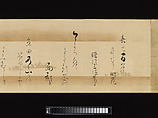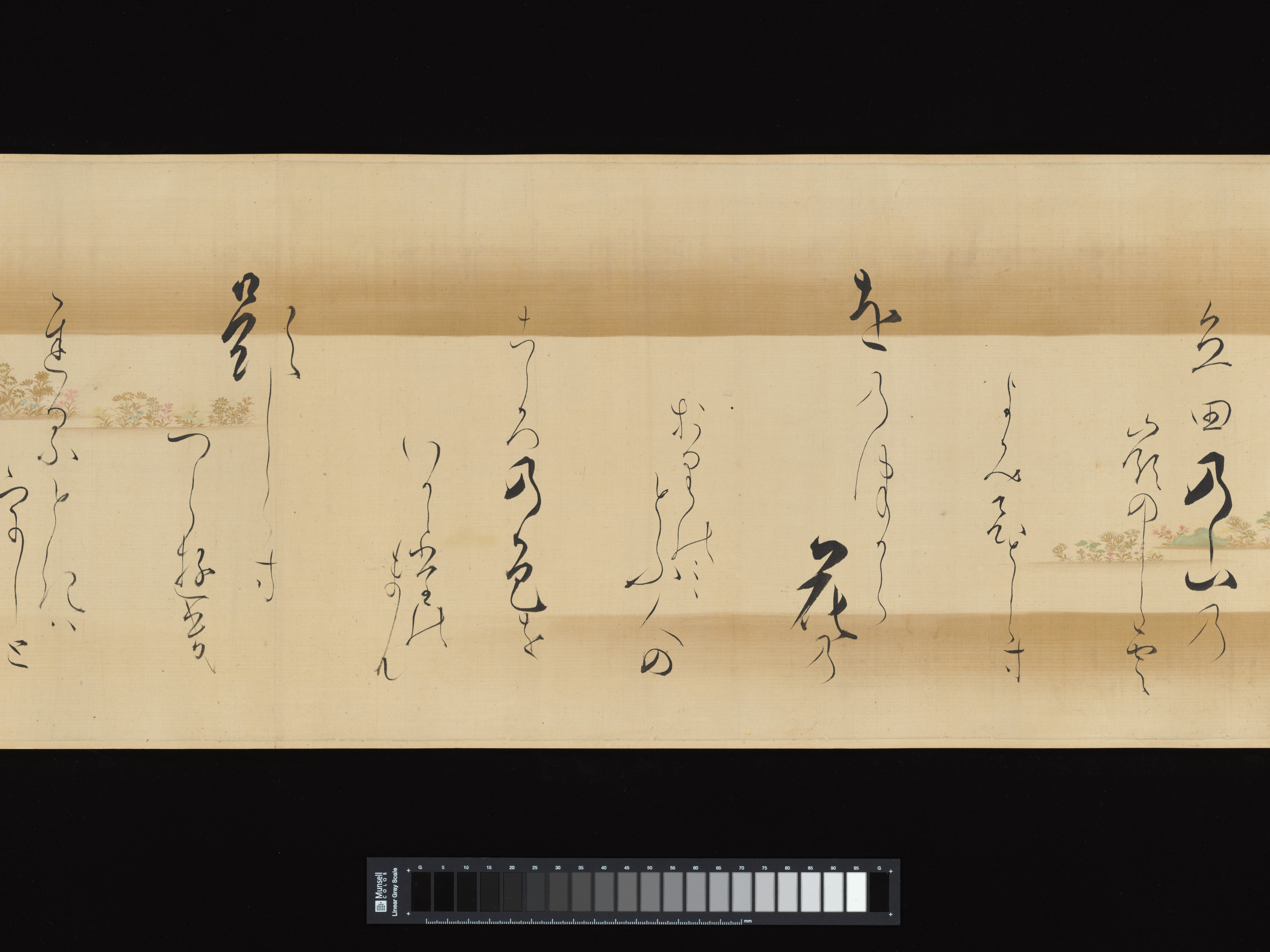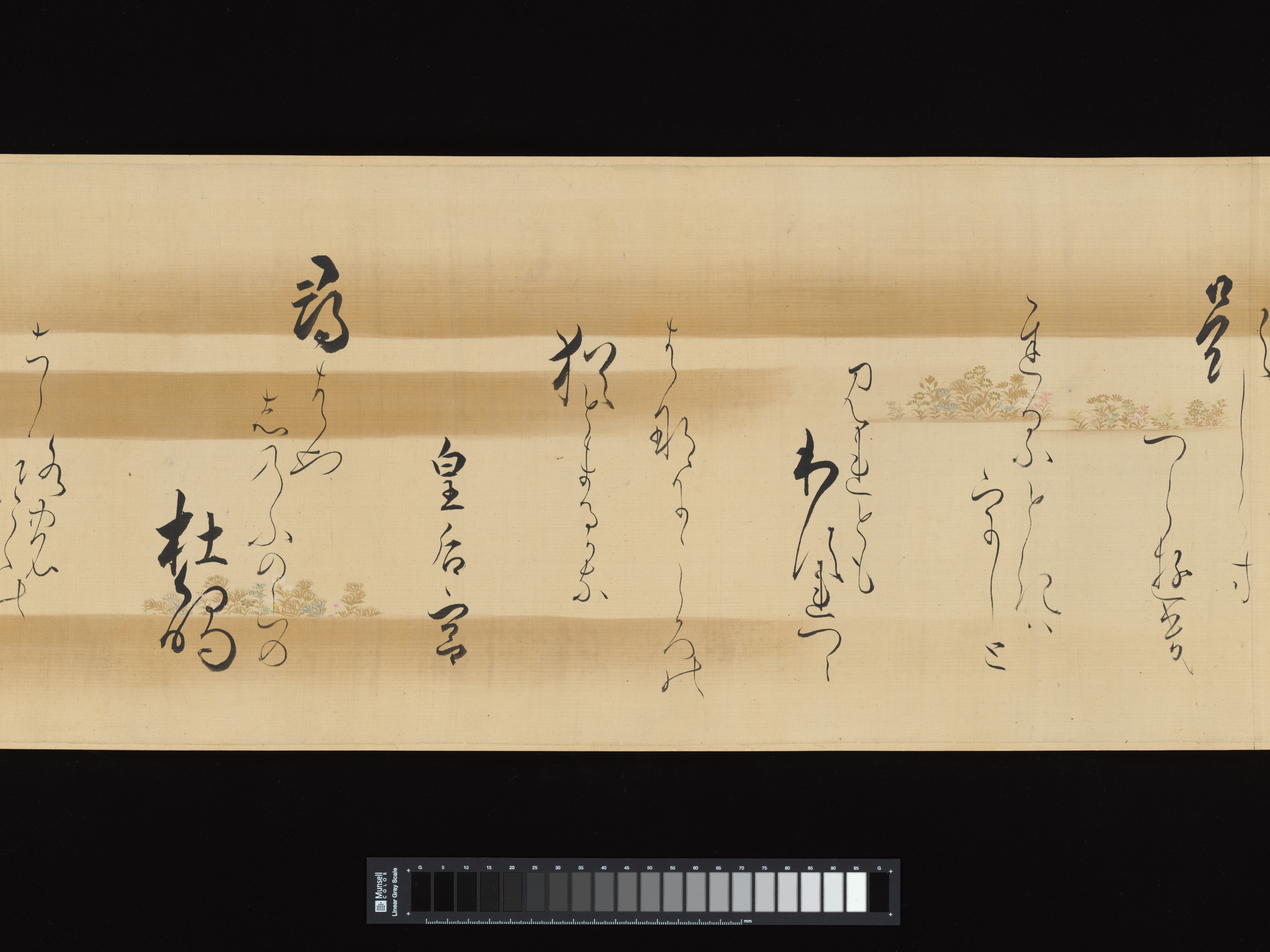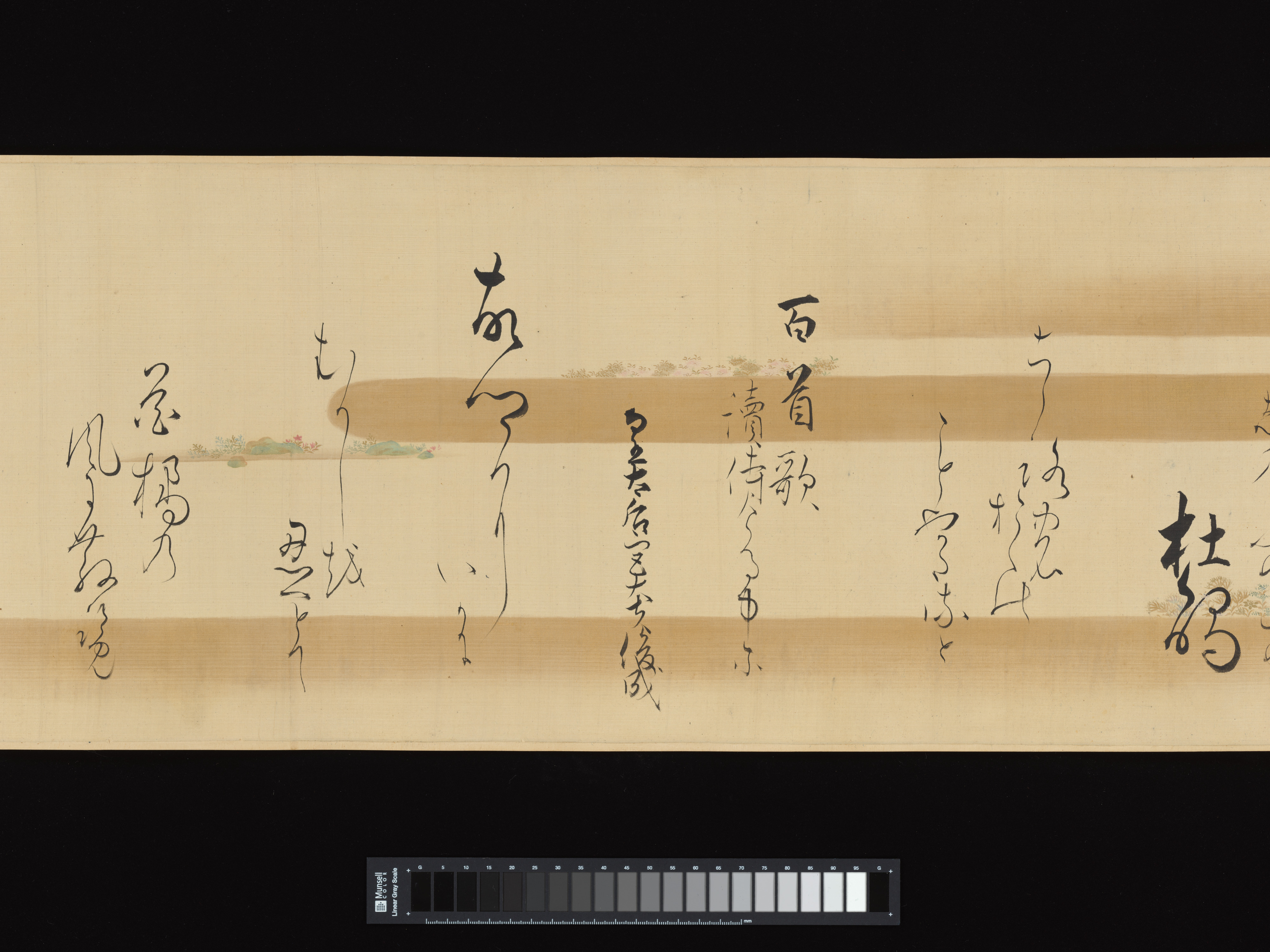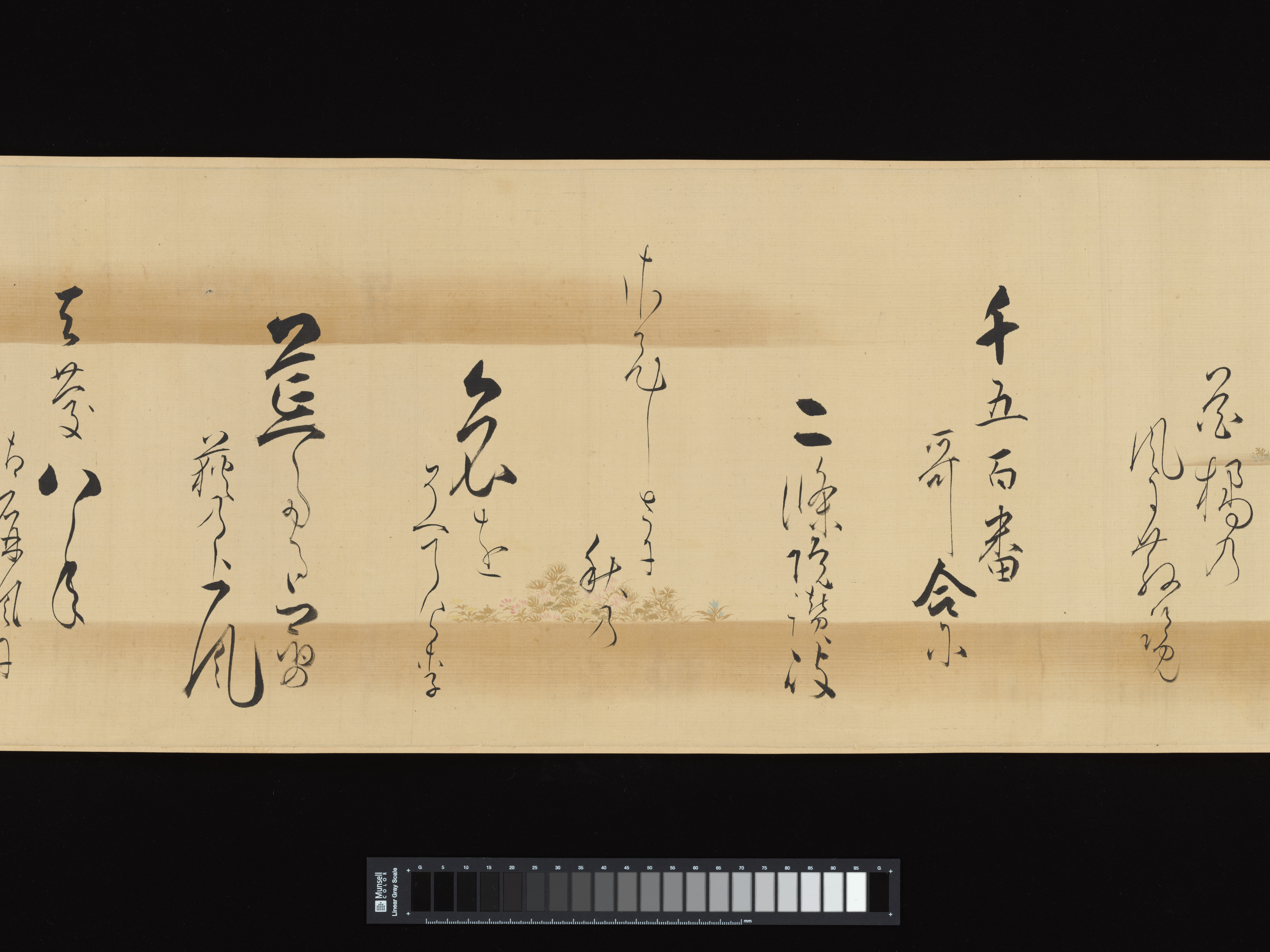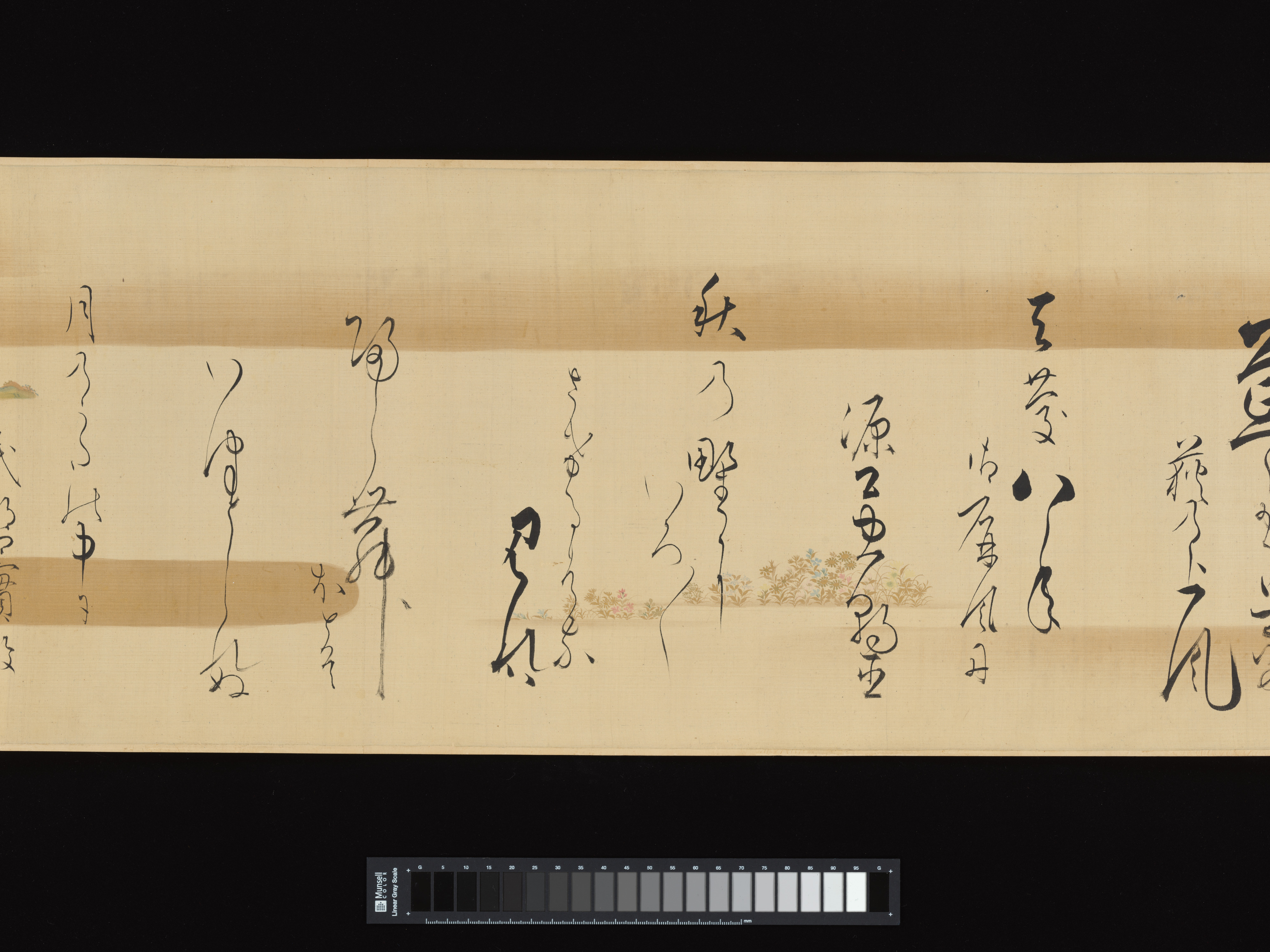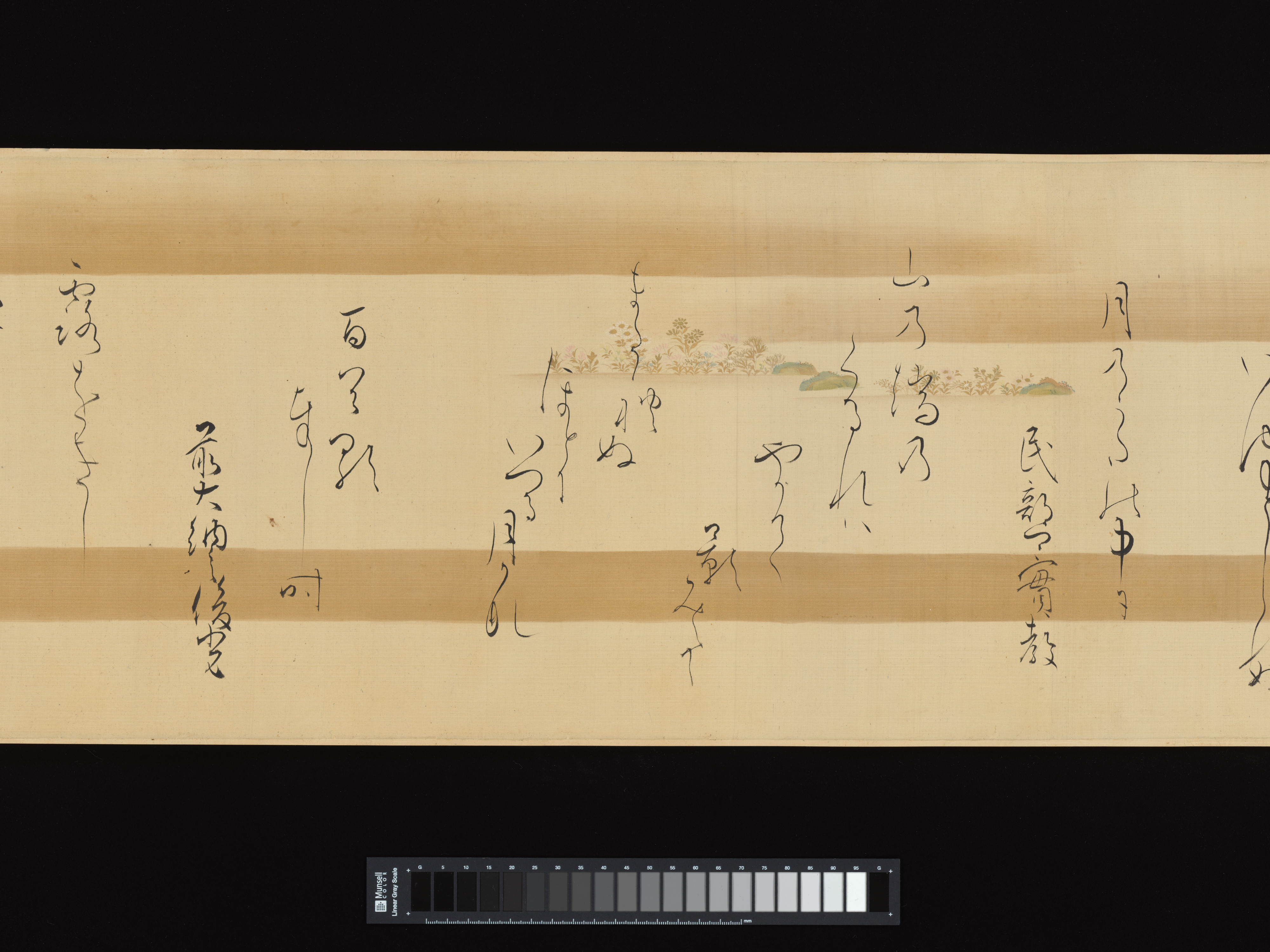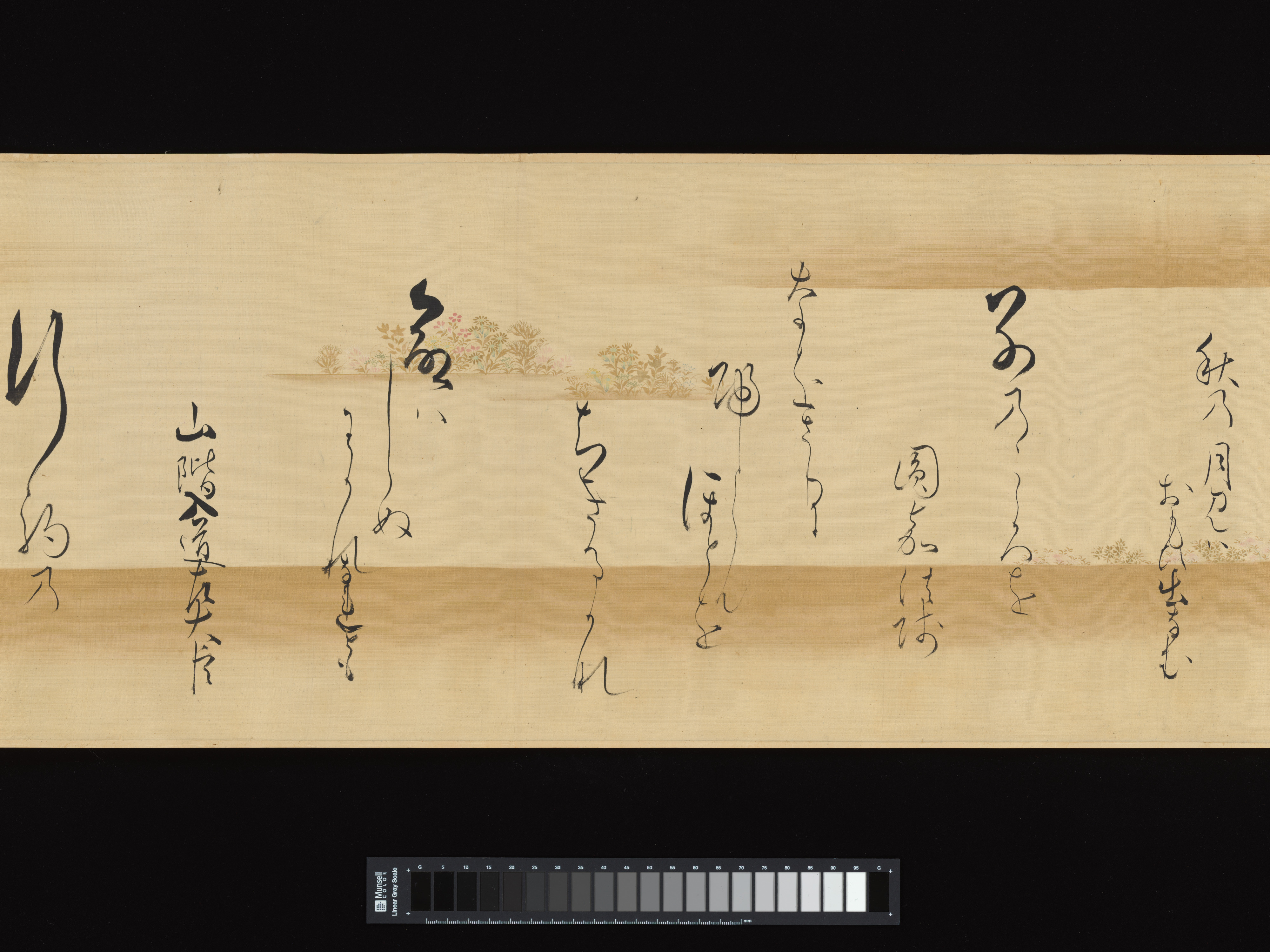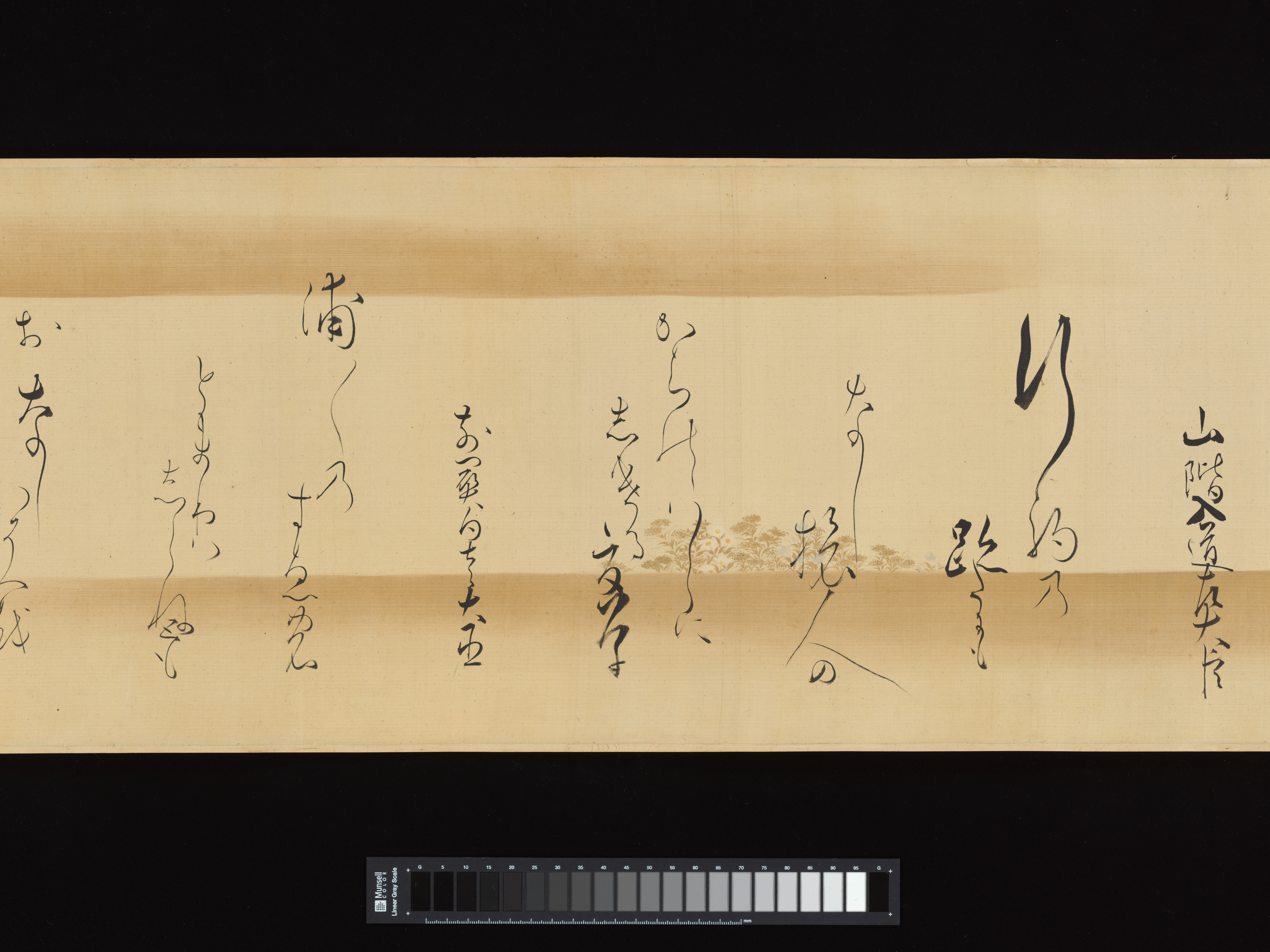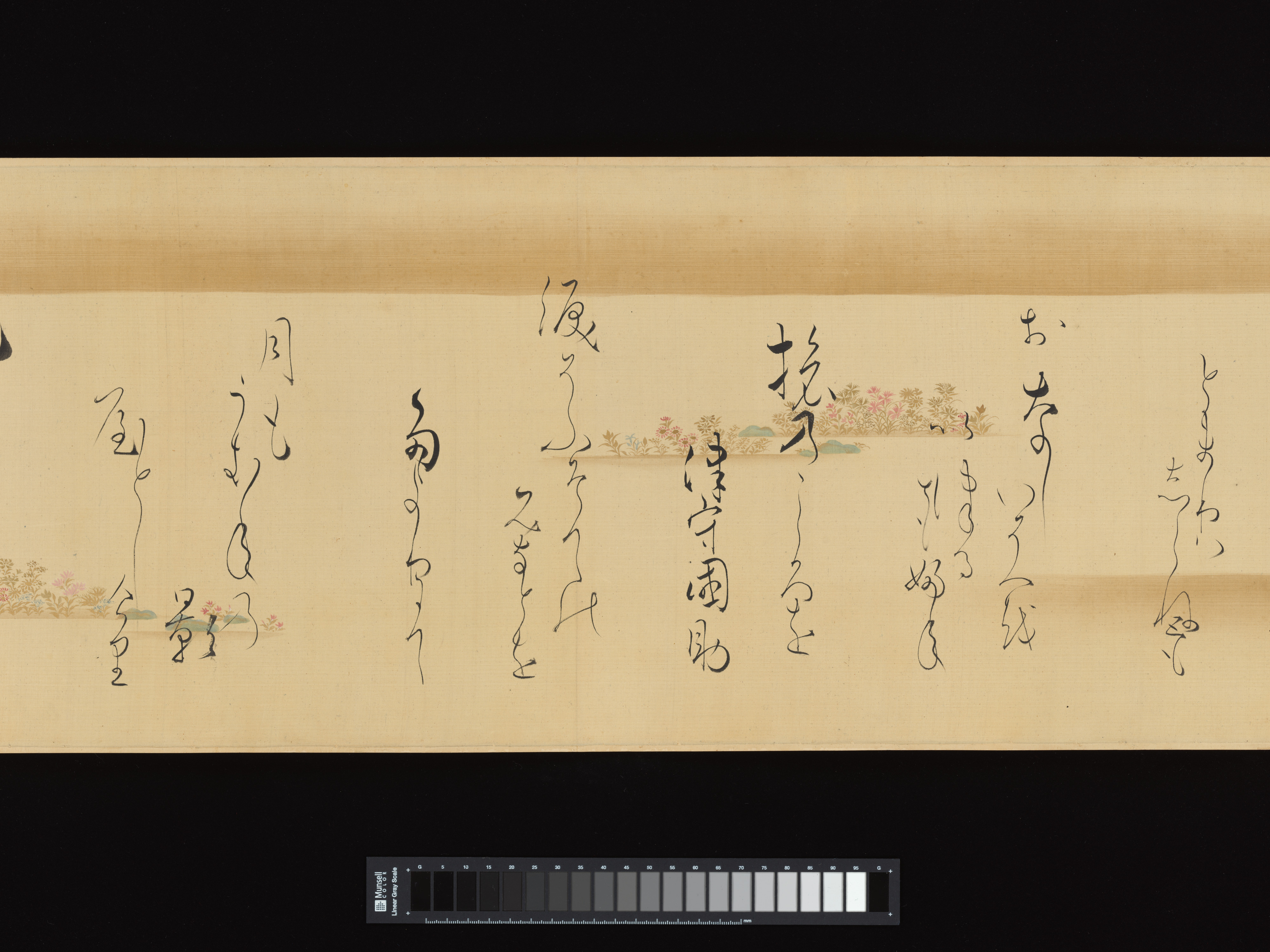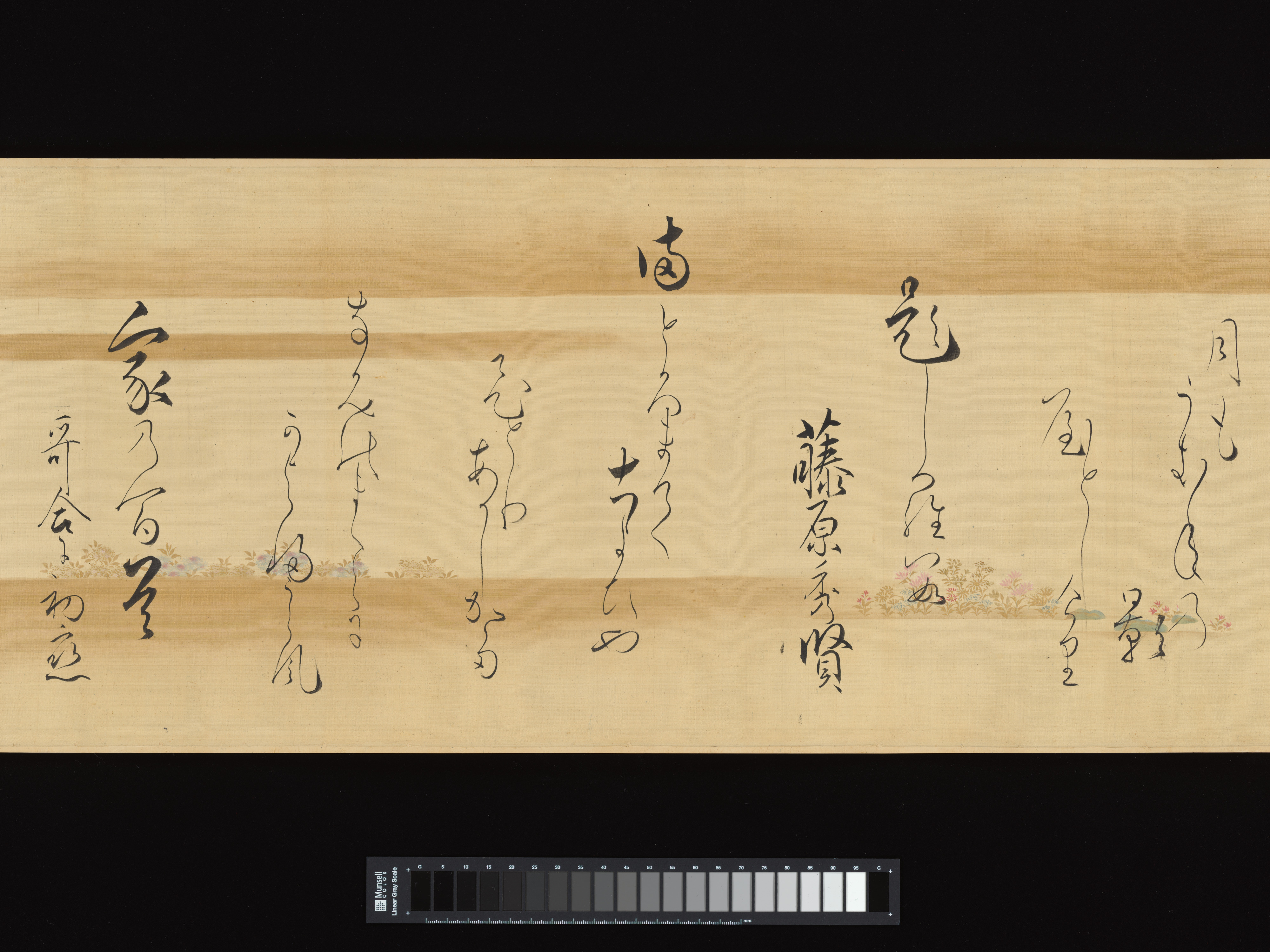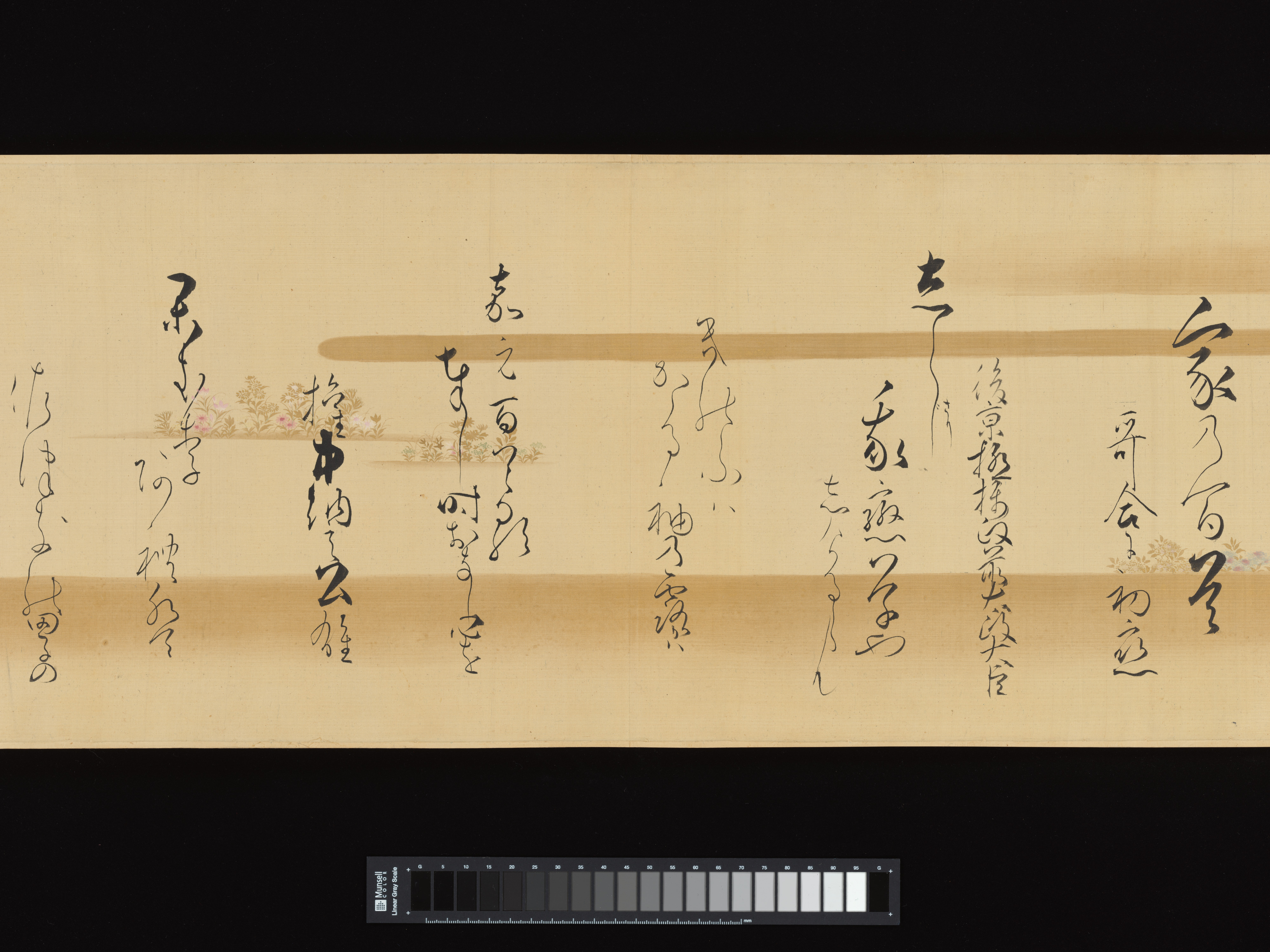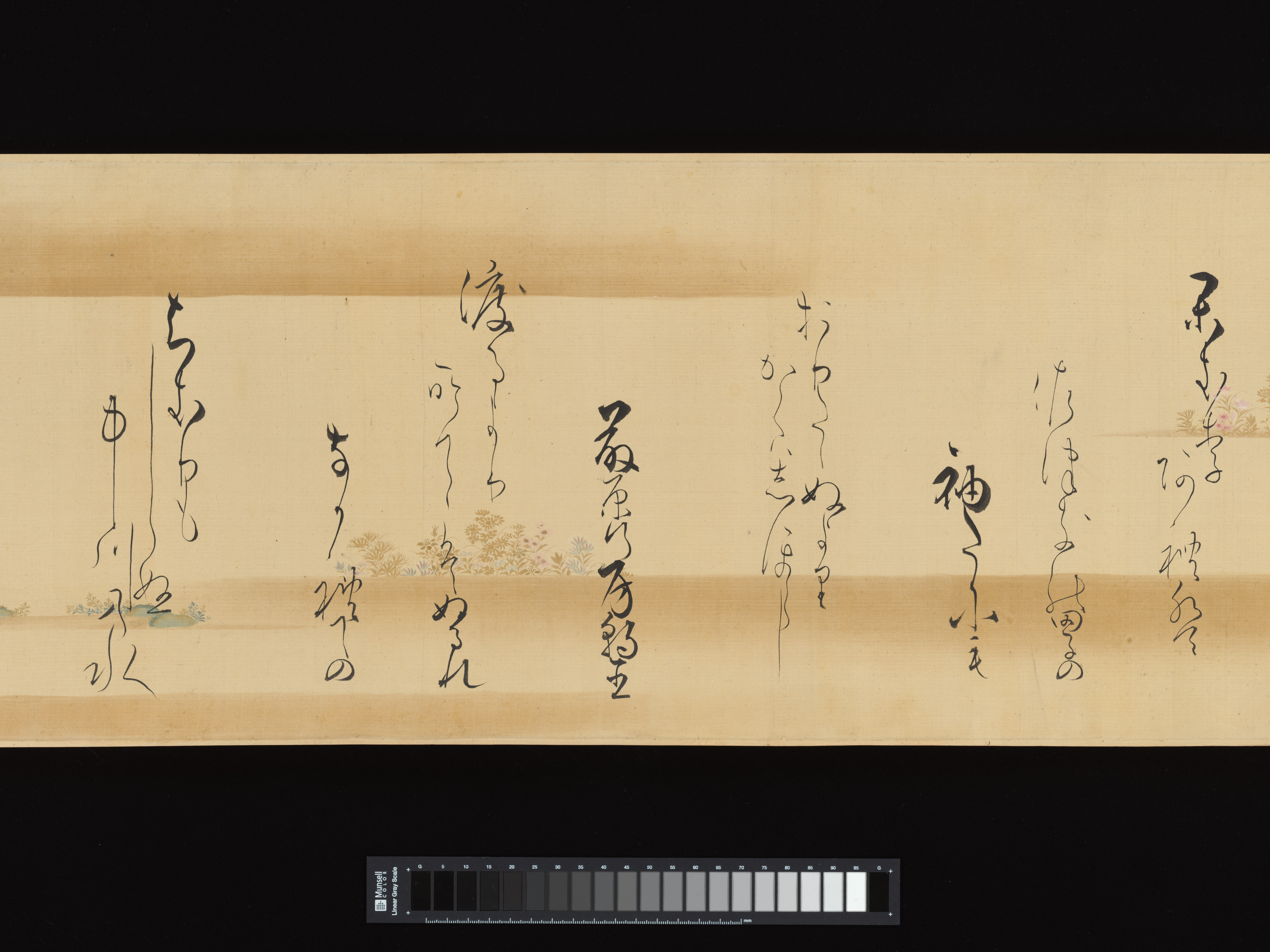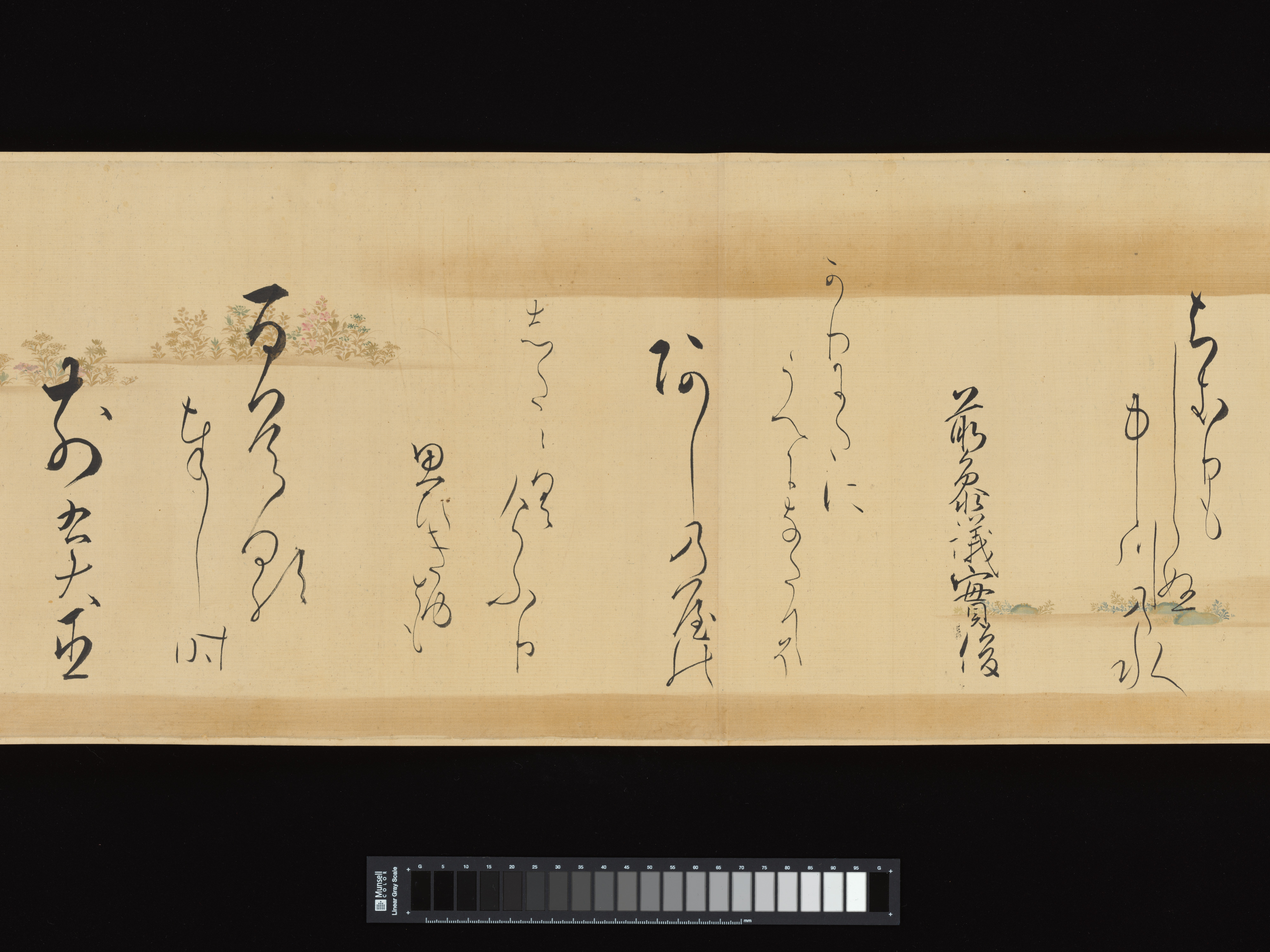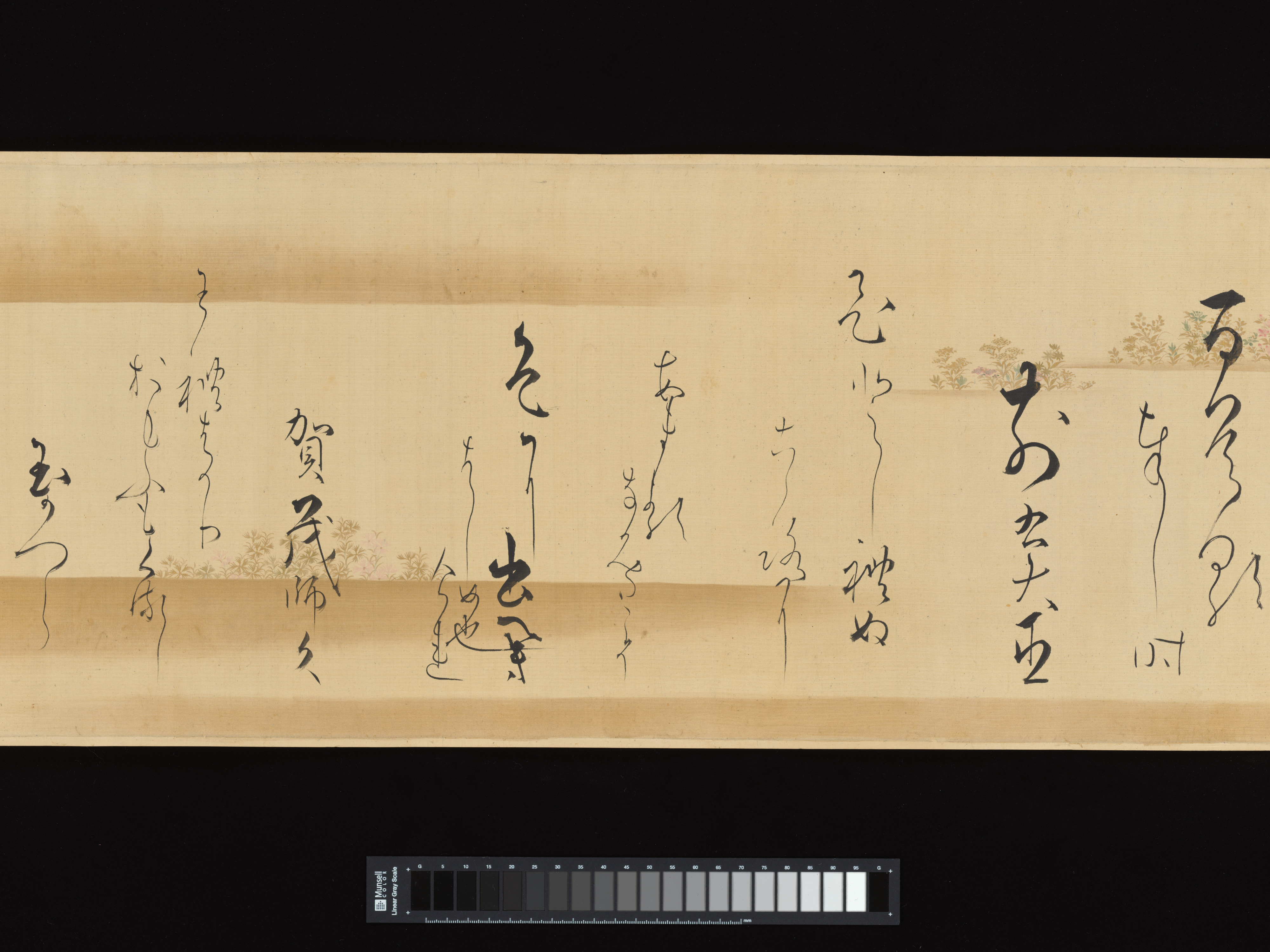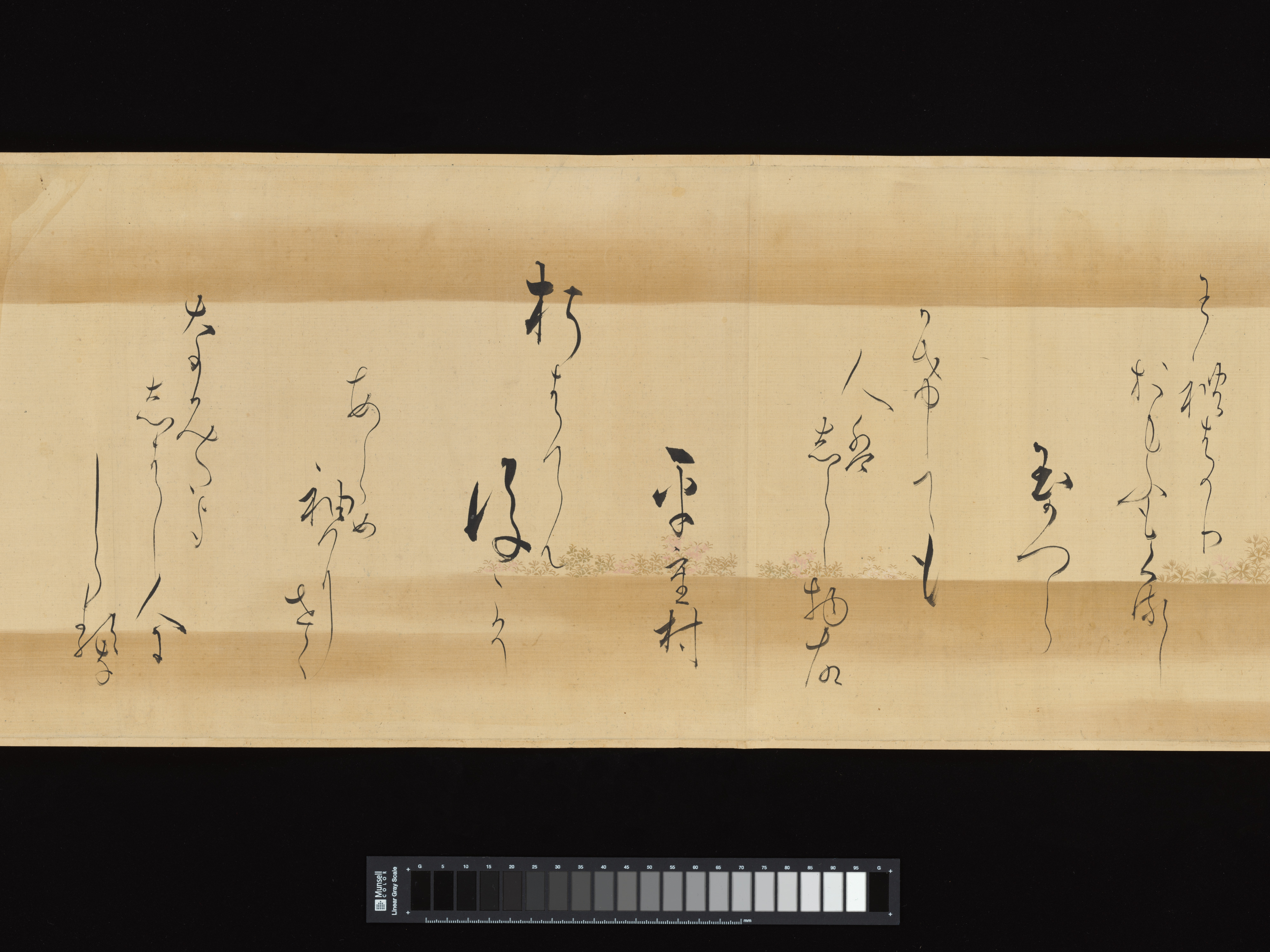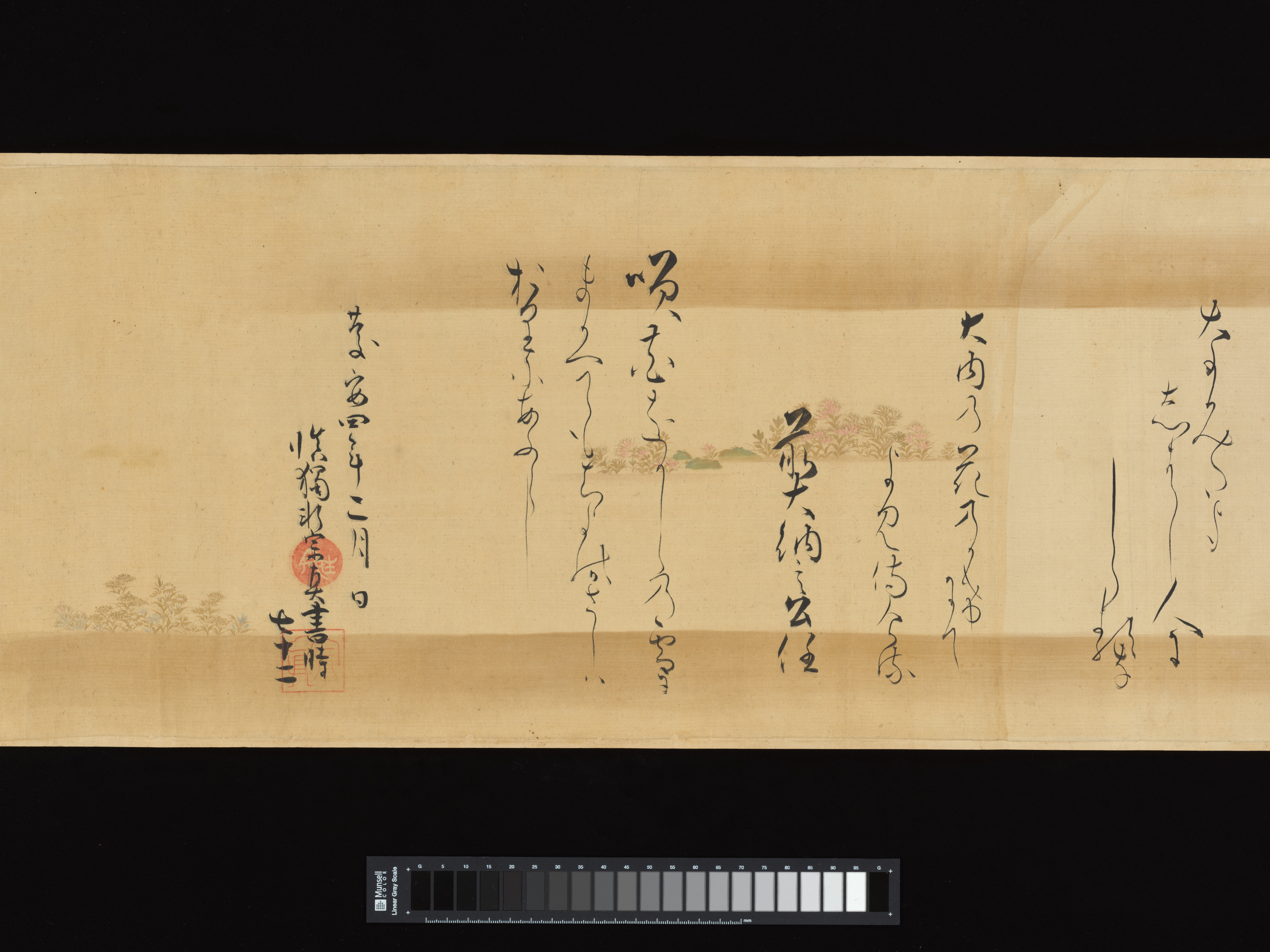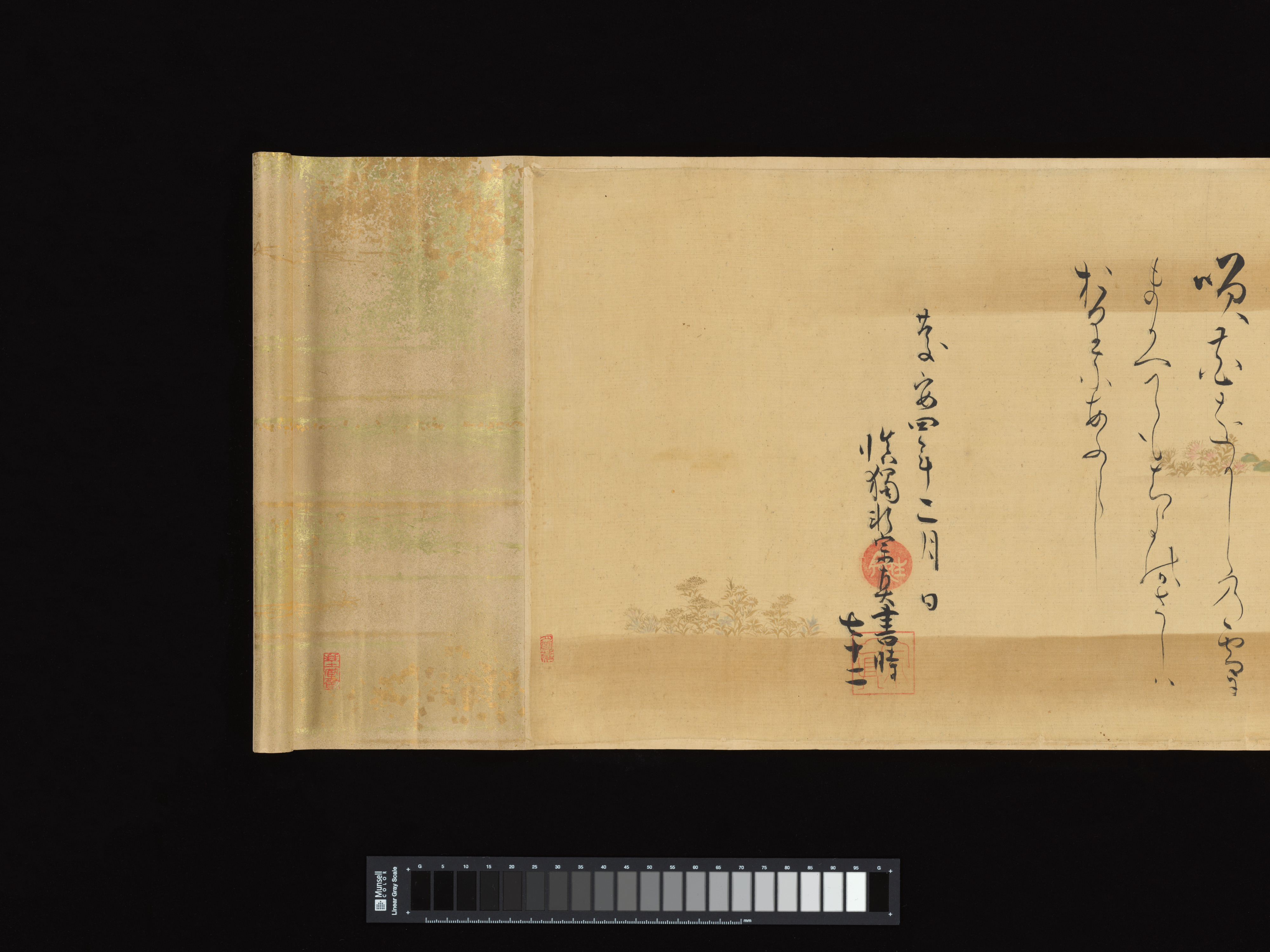Waka poems from the Collection of Poems of a Thousand Years, Continued
Calligraphy by Kojima Sōshin Japanese
Underpainting by Ogata Sōken Japanese
Not on view
Elegantly brushed on lavishly decorated paper by the Kyoto calligrapher Kojima Sōshin, this series of classical waka is drawn from the Collection of Poems of a Thousand Years, Continued (Shoku senzai wakashū), an imperially commissioned anthology of the fourteenth century. Whereas Sōshin applied the very tip of the brush to write in kana, he executed certain Chinese characters on a demonstrably larger scale using the brush’s side.
This image cannot be enlarged, viewed at full screen, or downloaded.
This artwork is meant to be viewed from right to left. Scroll left to view more.
